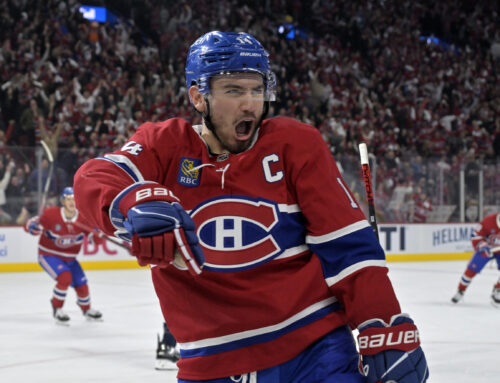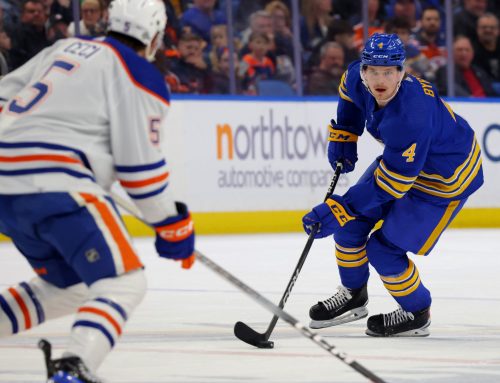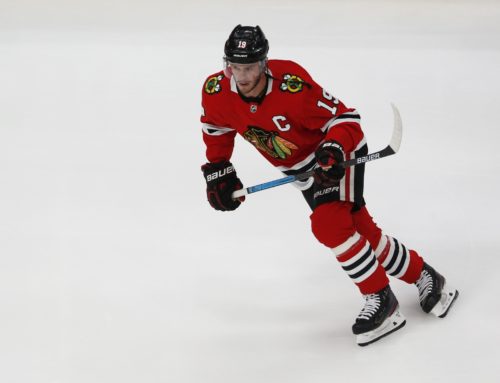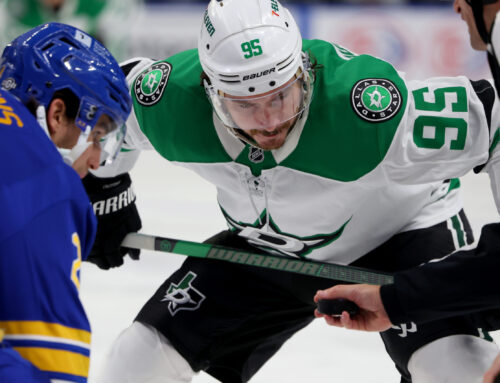
UFAs and RFAs and what they mean to salary cap leagues…
One nice thing about summer Ramblings is that it gives me a chance to tackle a variety of topics. So today I'm going to concentrate on a growing niche in the fantasy hockey industry: salary cap leagues.
A question that I was asked by a reader not too long ago has been stuck in my head. He wanted to know how to value a particular RFA-eligible player in his salary cap league. Because this league uses actual salary cap numbers, he needed to know because he would need to give this player a raise, ultimately decreasing his cap space.
I’m intrigued by any leagues that uses dollar values for each player and a spending limit for each team. Although I’m not in a league that uses actual salary cap numbers, I participate in both a fantasy hockey and fantasy baseball league that uses auction values to determine a player’s salary. Salary cap leagues, whether they are actual salary numbers or auction values, provide an added layer of strategy. Dollar value gives the leagues one more criteria to consider. Just like with a real professional team, you want cheap players that produce. You don’t want expensive players that don’t produce.
If you need to find a list of unrestricted free agents and restricted free agents, Cap Friendly provides you with a list of each, along with sorting and filtering tools.
The leftover UFAs won’t be as desirable in keeper leagues as RFAs, since the top 12 players according to last season’s cap hit were all age 30 and over. Three of these players were over the age of 40 (Jarome Iginla, Shane Doan, Jaromir Jagr). If eventually signed, these players could make sense in a deep league where you simply need to squeeze in one more player with an inexpensive salary. All three of the age-40 club members earned at least $3.5 million last season, but stand to earn much less if they can find an NHL home.
Of the three, I would target Jagr if he lands in a decent situation. Here’s why: Last season Jagr had more even-strength points (33) than Patrice Bergeron, Anze Kopitar, Joe Thornton, Jason Spezza, Matt Duchene, Ryan O'Reilly, Nick Foligno, Daniel Sedin, Wayne Simmonds, Jonathan Drouin, among others. Not bad for a 45-year-old. (Props to Fred Poulin for providing that fun fact.)
The RFA list is where things get more interesting. There are notable RFAs whose cap hit likely won’t change much. Ryan Johansen should receive a bit of a raise on his $4 million cap hit, but probably not much of a raise on his $6 million salary last season (it depends on what dollar amount your league uses).
There are other players who earned an amount much closer to the league minimum who stand to earn a significant raise. Those owners with a short-term view of winning will no doubt hope for the bridge deal. The downside is, of course, that the player would become even more expensive should he outperform his projected ceiling over the term of the bridge deal (think P.K. Subban). But most keeper owners likely think ahead two or three years at the most (if that) as opposed to seven or eight years. So in my view, the bridge deal should be considered highly desirable in salary cap keeper leagues.
So with many notable RFAs still without a contract at this point, there is still some uncertainty for these owners in planning for the season ahead. So let’s take this opportunity to examine some players who stand to receive a big hike in pay should their team decide to go the long-term route with them.
For that, I am filtering my list to show RFAs who had a cap hit of under $1 million last season. Here are the top 10 players according to points.
It would be generally safe to assume that the higher the point total, the greater the pay increase. So in real life, Leon Draisaitl is of course a prime target for an offer sheet (remember those?) Since Connor McDavid is locked up long-term at $12.5 million per season starting in 2018-19, the Oilers could be looking at around $20 million invested in two players if Draisaitl is locked up long term.
Now that Connor McDavid has signed, here's what the #Oilers should have to pay Leon Draisaitl. (@JonathanWillis)https://t.co/55qPkQ5MJN pic.twitter.com/6rZctrpVy1
— Sportsnet (@Sportsnet) July 5, 2017
This article from Jonathan Willis of Sportsnet projects that Draisaitl could earn between $6 – $6.5 million on a long-term extension, without considering a salary cap rise. A bridge deal could be lower than that, of course. Either way, Draisaitl owners should probably leave about $6 million in cap space to account for the raise resulting from a possible Draisaitl long-term deal. (Draisaitl earned $925,000 last season.)
Meanwhile, Jared Clinton of The Hockey News predicts a six-year deal worth $6 million for David Pastrnak, who earned the same amount as Draisaitl last season. That would give Pastrnak a possible raise of $5 million, so his owners should also leave close to $6 million for a possible long-term deal. Clinton uses the salaries of Filip Forsberg, Aleksander Barkov, and Brandon Saad as precedents.
Pastrnak deserving of long-term, big-money deal from Bruins, writes @THNJaredClinton https://t.co/c0IOdIwc0a pic.twitter.com/SGmSklwKLH
📢 advertisement:— The Hockey News (@TheHockeyNews) July 10, 2017
Of course, Clinton does not rule out the possibility of a bridge contract for Pastrnak. But if the Bruins continue to wait on Pastrnak, wouldn’t that make him a prime candidate for an offer sheet as well? Cap league owners shouldn’t be enamored with this scenario, since the team using the offer sheet will likely drive up the price as a result.
Another interesting one is Bo Horvat. Canucks’ fans would feel more secure if their potential future captain is locked up long term. But while they wait, Ben Kuzma of the Vancouver Province listed a few possible templates as to what a Horvat contract could look like.
#Canucks sold on Horvat, but what's best contract extension term for future captain? https://t.co/CfxSXH6VvB #NHL
— Ben Kuzma (@benkuzma) July 10, 2017
Of all the players with six-year contracts listed in the article, I would place Horvat behind Jonathan Drouin and Aleksander Barkov (each hold contracts of over $30 million), but ahead of Vincent Trocheck, Rickard Rakell, and Victor Rask (all under $30 million total). That would give Horvat a six-year contract worth $30 million. So doing the math, Horvat owners should prepare for at least a $4 million pay hike. Although a bridge deal is a possibility, Horvat is too important an asset to the future of the Canucks.
Finally, what about the lone blueliner on the list? Colton Parayko is a popular keeper leaguer because of his size and hard shot. Perhaps we haven’t seen his best play, as fantasy owners probably expected more than the four goals and 35 points he scored last season. Parayko has filed for arbitration, meaning that a one or two-year bridge contract seems likely.
There goes any offer sheets for Colton Parayko. #stlblues https://t.co/EWqLbiZGQ3
— Game Time Media (@StLouisGameTime) July 5, 2017
Would you place him near someone like Justin Schultz? I use Schultz as a comparable because he recently received a three-year contract worth $5.5 million per season, which turned out to be a massive pay hike for a player who just came off a one-year “prove it” contract worth $1.4 million.
My guess for Parayko would be that one or two-year bridge contract worth around $4 million, meaning that his owners would need to budget an extra $3 million. So a potential bridge deal should help Parayko continue to be a desirable commodity for the short to medium term. Just don’t underrate Alex Pietrangelo in the St. Louis situation.
*
For more fantasy hockey information, follow me on Twitter @Ian_Gooding.





 BUF
BUF NYR
NYR CHI
CHI WSH
WSH CBJ
CBJ VAN
VAN S.J
S.J PIT
PIT ANA
ANA N.J
N.J
